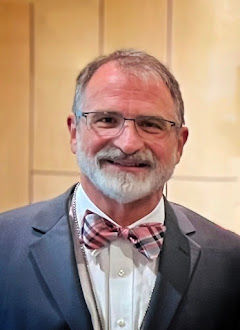“Second Sight”[1]
2 Cor. 5:6-10, 11-17; Mk. 4:26-34
I think this serves as a paradigm for life in general. Our lives are so filled with details, distractions, and disruptions that we often say we’re like “chickens running around with their heads cut off.” I wonder if we realize just how true that is. Or to use a different idiom, we “can’t see the forest for the trees.” We go from one “urgent” crisis to the next without even stopping to ask whether our lives have any rhyme or reason.
Somehow, we have to find a way to see past all the obvious commotion in our lives. I didn’t say “look” past the obvious, but rather “see” past it.
Our eyes are amazing organs. Like our ears, our noses, and even our brains, they develop a way of “filtering” out extraneous things. That’s what so-called “speed reading” is all about—learning a technique to overlook what is obvious and to only actually see what is necessary to understand what is being communicated.
I think that the Christian faith provides a way of “seeing” past the obvious disorder that makes up our hectic lives to find a meaning that brings everything into place.
That’s what Paul was trying to do with the church at
But Paul didn’t give up on them. He kept right on preaching the Gospel of our Lord and Savior Jesus the Christ, patiently teaching and correctly them, above all by his own example. One of the things he tried to teach them was the principle that “we walk by faith, not by sight” (2 Cor. 5:7). I like the way Gene Peterson translates it: “It's what we trust in but don't yet see that keeps us going” (2 Cor. 5:7, The Message). It’s all too human to get caught up in the obvious distractions and disruptions that fill life. But Paul urges the Christians at
For Paul, the key to seeing past the obvious was to focus his attention on the death and resurrection of Jesus. Again, I like Gene Peterson’s translation of this passage: “Our firm decision is to work from this focused center: One man died for everyone. That puts everyone in the same boat. He included everyone in his death so that everyone could also be included in his life, a resurrection life, a far better life than people ever lived on their own” (2 Cor.
Jesus called that the “
The point is that God’s work in this world is not obvious. At times it may even be downright invisible. At times it is all to easy to find ourselves caught up in the torrent of turmoil that rushes through our lives and find it impossible to believe that God is doing anything in this corrupt world.
But that’s when we need to find the faith to see past the obvious. That’s when we need to find a focal point that can serve as an organizing center for our lives. That’s when we need to remind ourselves that the
Yes, this makes it harder for us. This means that we have to truly embrace the Gospel we say we believe—that God is working to restore all creation. That God sent Jesus the Christ to overcome all the powers that enslave creation by his death and resurrection. Because it is only as we truly embrace this good news that we will be able to make it the focal point that serves as an organizing center for our lives.
And it is only as we acquire this “second sight” that we will be able to see past the obvious turmoil in which we live and find the new creation already growing among us. Then we can have confidence because we entrust the kingdom to God who alone gives the growth. Then we can move past differences over worship styles, fears about finances, embarrassment about our size, and frustrations over the obstacles we face, and carry out our calling: to promote the

